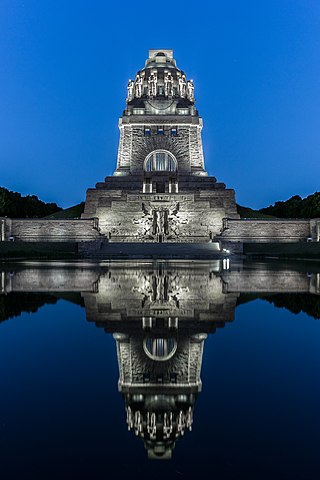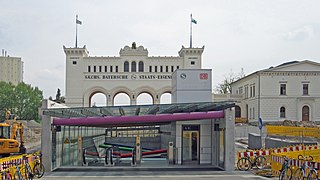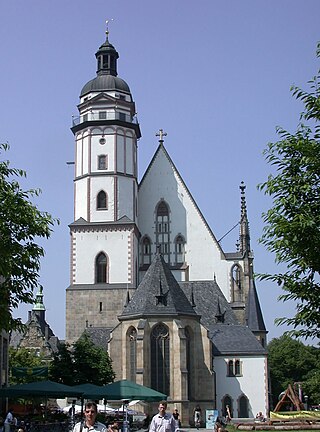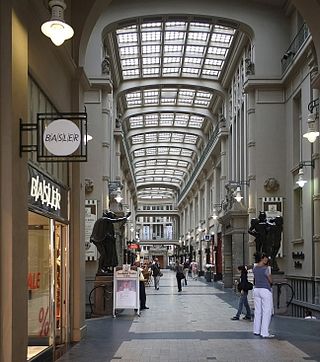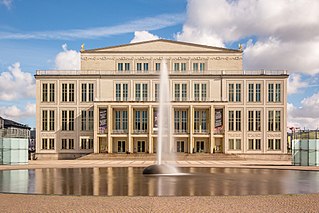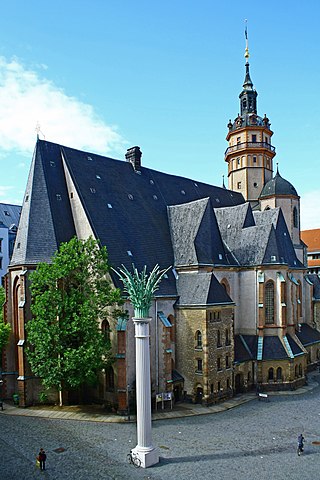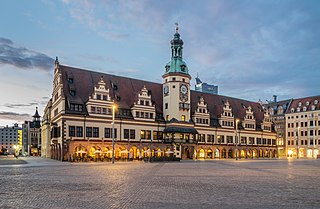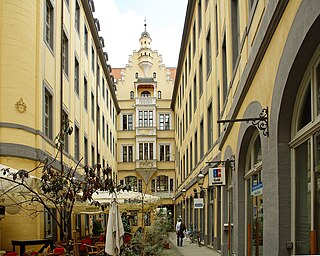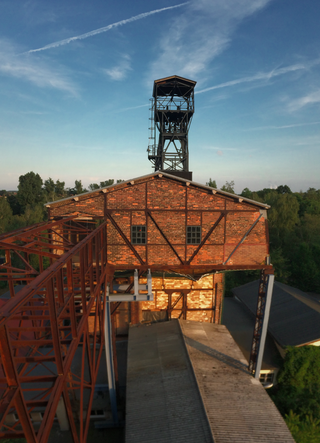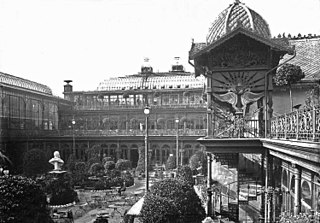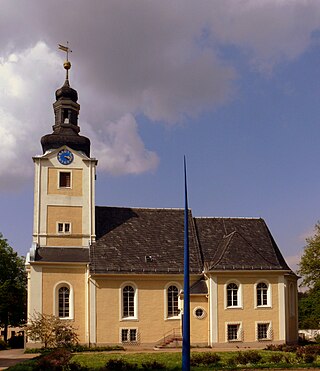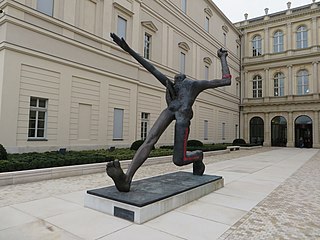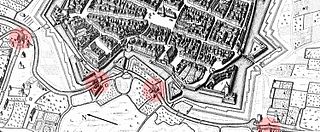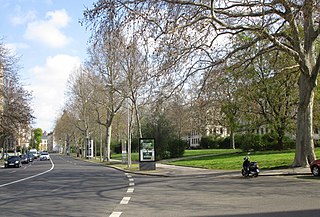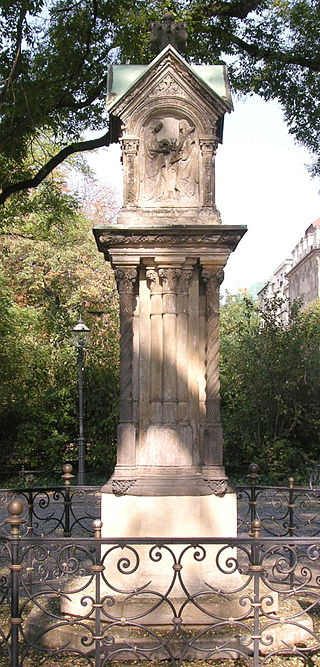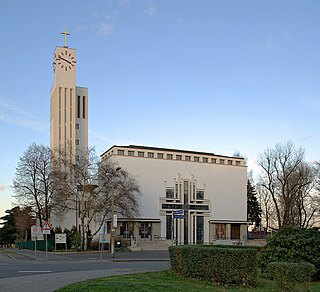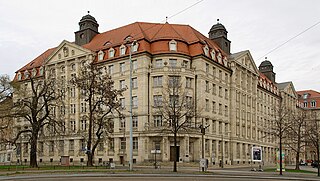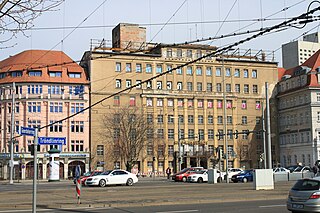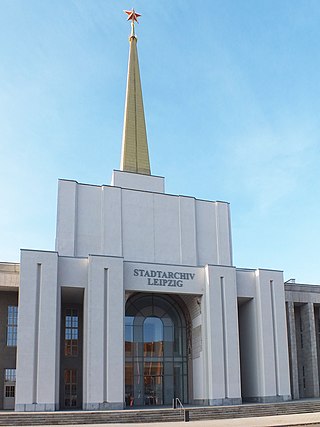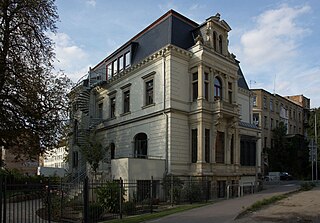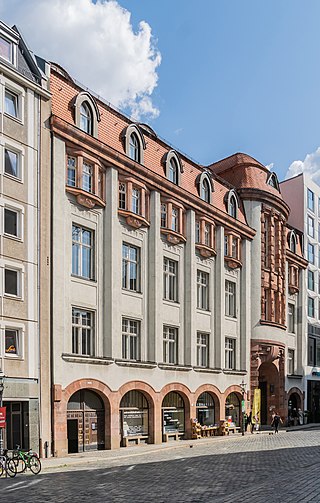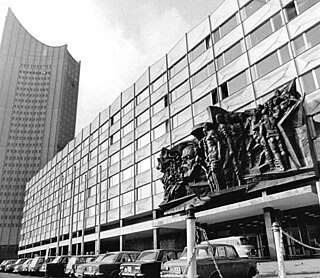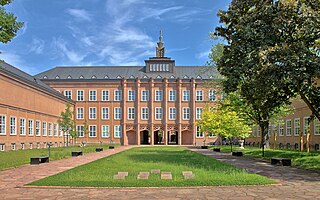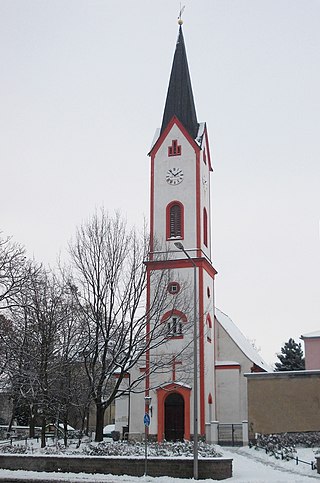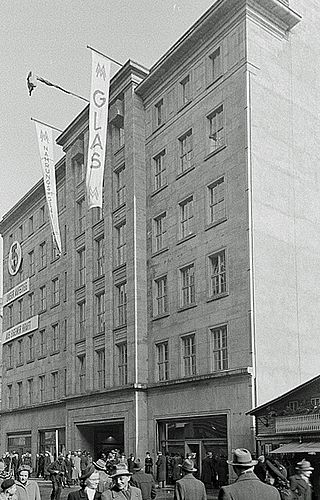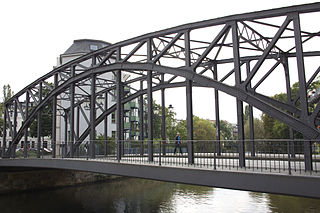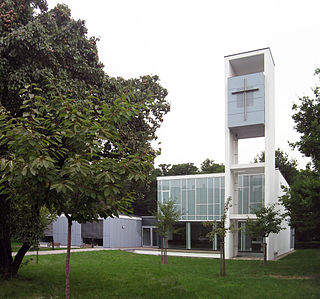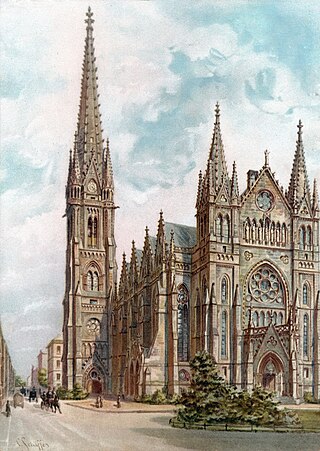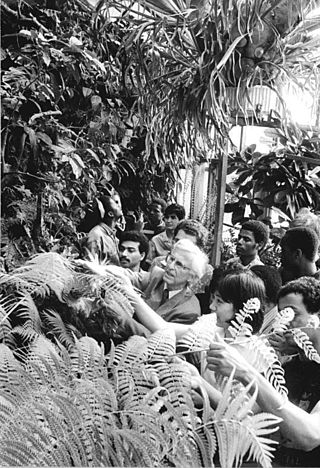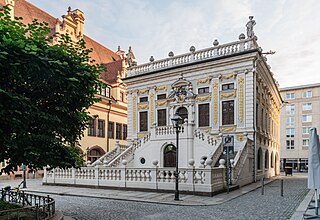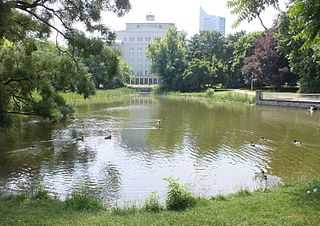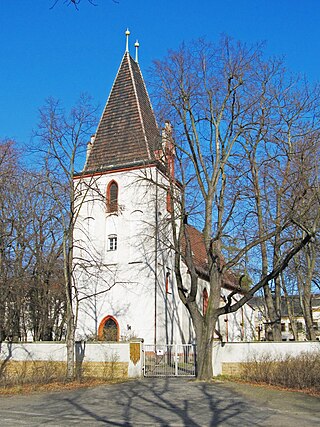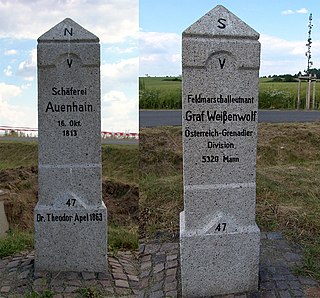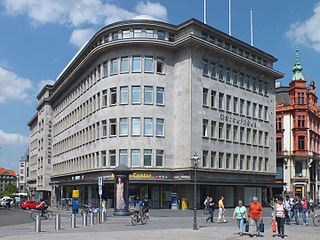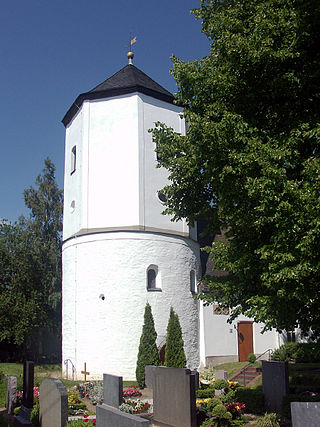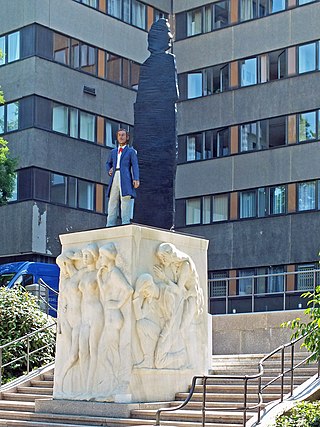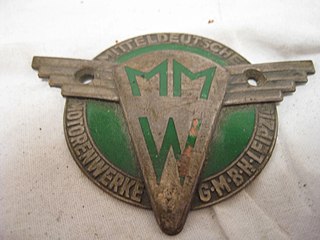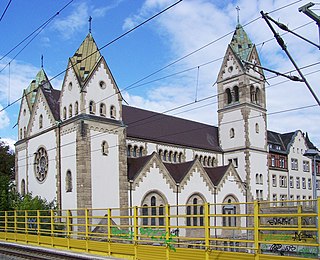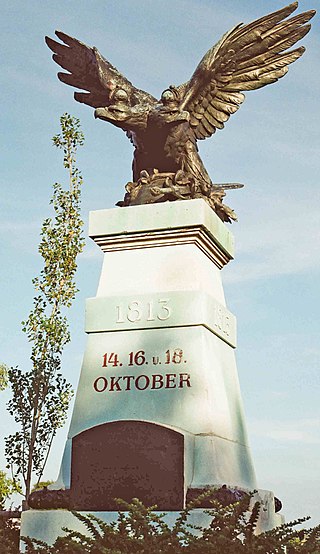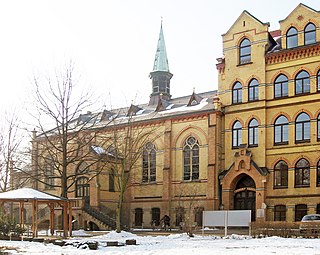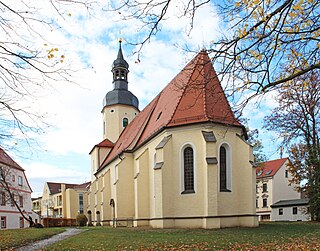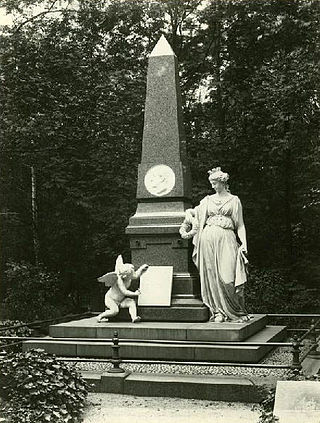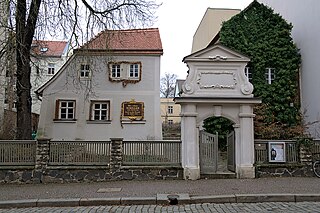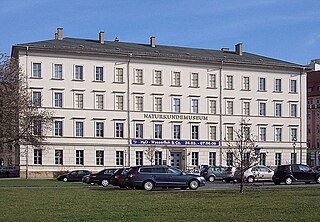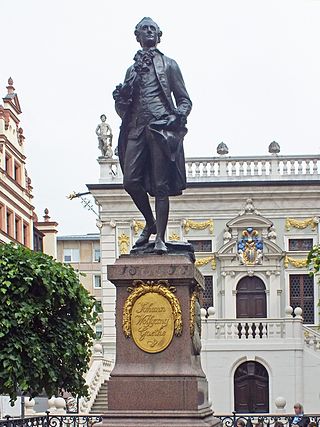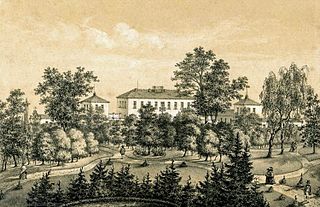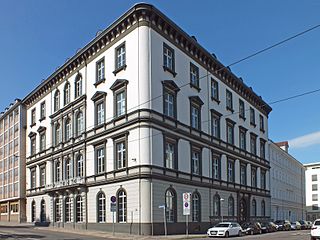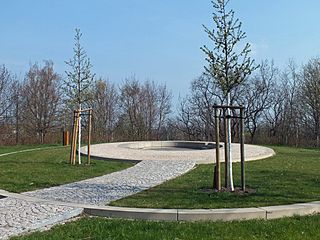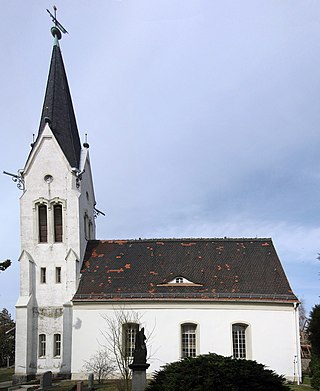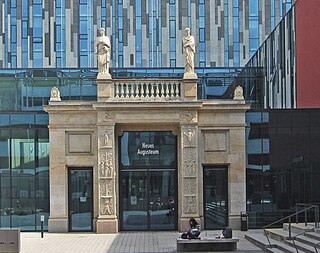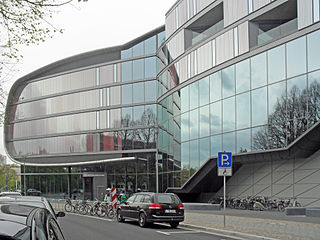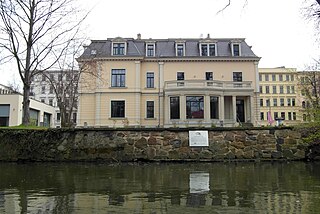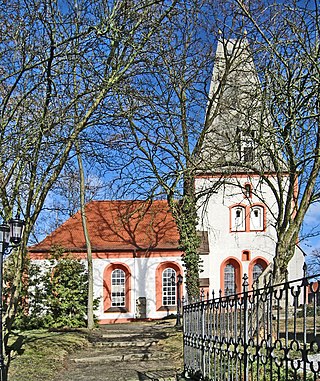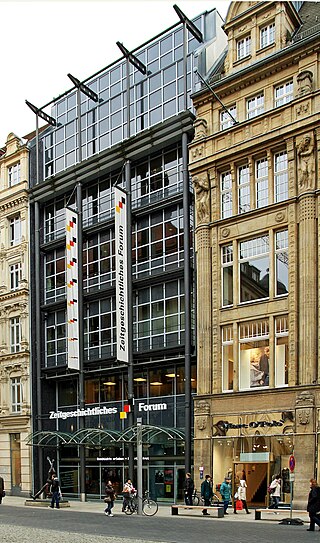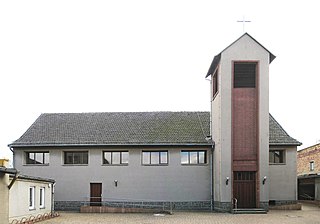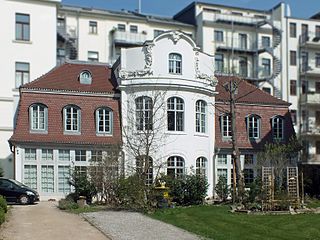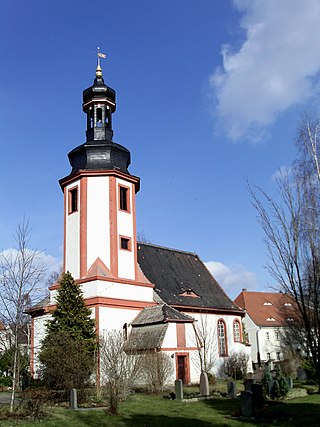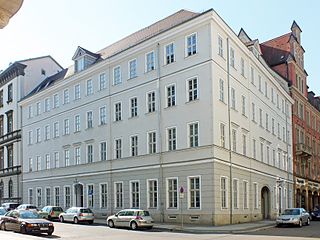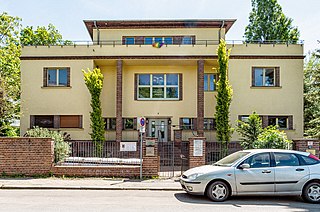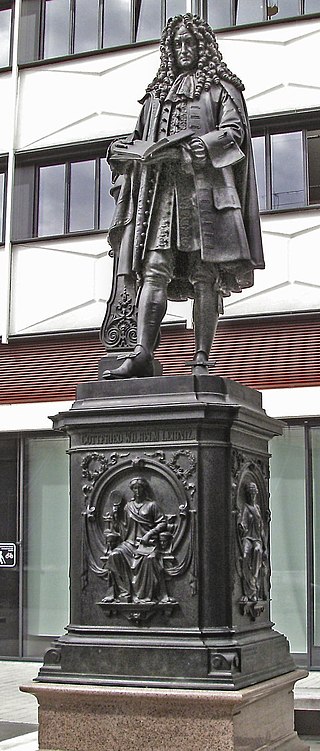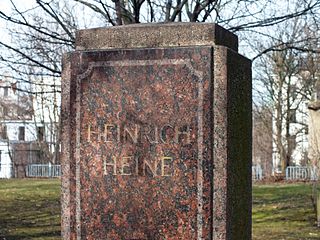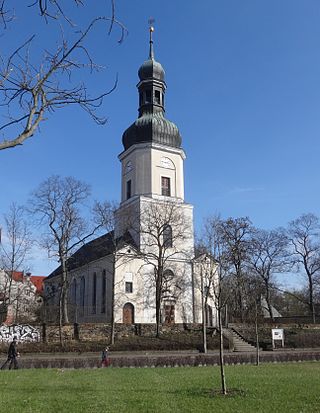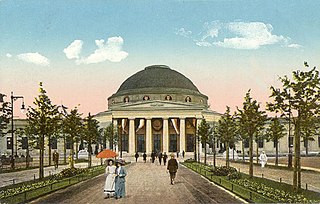78 Sights in Leipzig, Germany (with Map and Images)
Legend
Premium Sights
Book tickets, guided tours and activities in Leipzig.
Guided Free Walking Tours
Book free guided walking tours in Leipzig.
Welcome to your journey through the most beautiful sights in Leipzig, Germany! Whether you want to discover the city's historical treasures or experience its modern highlights, you'll find everything your heart desires here. Be inspired by our selection and plan your unforgettable adventure in Leipzig. Dive into the diversity of this fascinating city and discover everything it has to offer.
Sightseeing Tours in LeipzigActivities in LeipzigThe Monument to the Battle of the Nations is a monument in Leipzig, Germany, to the 1813 Battle of Leipzig, also known as the Battle of the Nations. Paid for mostly by donations and the city of Leipzig, it was completed in 1913 for the 100th anniversary of the battle at a cost of six million goldmarks.
Leipzig Bayerischer Bahnhof is Germany's oldest preserved railway station, located in Leipzig, Germany, in the southeastern part of the district Mitte. The station was first opened in 1842 for the Leipzig–Hof railway by the Saxon-Bavarian Railway Company, later taken over by the Royal Saxon State Railways and operated as the Saxon-Bavarian State Railways.
The St. Thomas Church is a Lutheran church in Leipzig, Germany, located at the western part of the inner city ring road in Leipzig's central district. Martin Luther preached in the church in 1539. It is associated with several well-known composers, especially Johann Sebastian Bach, who was its Thomaskantor from 1723 until his death in 1750. The church holds his remains.
Wikipedia: St. Thomas Church, Leipzig (EN), Website, Website
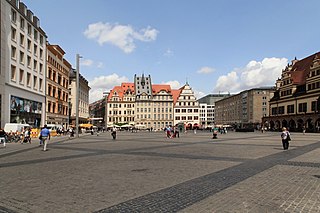
The Markt is a square of about 1 ha in Leipzig's district of Mitte, Germany. It is considered the center of the city. The Old Town Hall stands on it, which demonstrates its particular historical importance. The square was named Platz des Friedens from 1950 to 1954. Its paving is a listed heritage monument.
The Mädler Arcade Gallery is the last completely preserved historic shopping arcade covered by an end-to-end glass roof in the city center of Leipzig. It is a facility of upmarket retail, restaurants, offices and cultural establishments.
The opera house is the venue for the opera and ballet divisions of the Leipzig Opera. The opera house is located in the centre of Leipzig on Augustusplatz, opposite the Gewandhaus. It was built in 1954–1960 according to a design by Kunz Nierade and Kurt Hemmerling and is kept in a neoclassical style.
Wikipedia: Opernhaus Leipzig (DE), Website, Twitter, Facebook, Instagram, Youtube
The Museum der bildenden Künste Leipzig in Leipzig is a German art museum. It was established in 1848 as an initiative of the citizens, initially in the Leipzig Bürgerschule as the first interim. From 1858 to 1943, the Picture Museum was housed in its own collection building on Augustusplatz. After another interim period from 1945 to 2003, the museum's holdings have been housed in the new museum building in Katharinenstraße since 2004. With over 10,000 m² of exhibition space, it is one of the largest exhibition venues in Germany. The museum is run by the city of Leipzig.
Wikipedia: Museum der bildenden Künste (DE), Website, Twitter, Facebook, Soundcloud, Youtube
The St. Nicholas Church is one of the major churches of central Leipzig, Germany. Construction started in Romanesque style in 1165, but in the 16th century, the church was turned into a Gothic hall church. Baroque elements like the tower were added in the 18th century.
Wikipedia: St. Nicholas Church, Leipzig (EN), Website, Facebook
The Old Town Hall, which dominates the east side of the Markt square in Leipzig's district Mitte, is considered one of Germany's most important secular Renaissance buildings. At the rear is the Naschmarkt. The mayor and the municipal administration have been housed in the New Town Hall since 1905.
Barthels Hof is a former trade court building complex in Leipzig in Germany, located in the borough Mitte. It is the last “through courtyard” that was preserved almost in its original condition. That means, the carts drove in, the goods were unloaded, and the carts drove out - without turning around. The horses were stabled in the suburbs. Later, from 1893 on, only samples of the goods were shown in the trade fairs and made to order. The Barthels Hof stretches from the market square to Kleine Fleischergasse and is now one of the city's most important sights. Today, it is used for a restaurant and some small shops.
11. Dölitzer Schacht
The dölitz shaft lignite mine was a lignite mine in the Dölitz district of Leipzig and is the last substantially well-preserved testimony to lignite mining in Central Germany. Popularly known as the "Dölitz Shaft", the facility was operated almost continuously from 1895 until 1959. The last coal was officially mined on June 13, 1959. The surface facilities with headframe, shaft house, hoisting machine room and steam boilers as well as the new sorting system have been preserved. These buildings are listed as the "Technical Monument Dölitz Shaft" and are part of the Central German Road of Lignite.
12. Krystallpalast Varieté Leipzig
The crystal palace was an entertainment facility in Leipzig for about 60 years. It was considered the greatest of its kind in Germany and was unique in Europe when it comes to the variety of events and spatial complexity. The name of the heart was a building consisting of a glass and iron with a hall that was primarily used for variety events, which is why it was often spoken by the crystal palace variety. A central dome building, the Alberthalle, had over 3,000 places.
13. Marienkirche
St. Mary's Church Leipzig-Stötteritz is an Evangelical Lutheran religious building in the Leipzig district of Stötteritz. It was built in 1702/03 as a single-nave hall church in the Baroque style, making it the oldest building in the district. Inside the listed church is a triptych created around 1480 in Hans Pleydenwurff's entourage, which is considered the most important work of late Gothic panel painting in Leipzig.
14. Jahrhundertschritt
The Step of the Century is a bronze sculpture that was created by Wolfgang Mattheuer in 1984. It is considered one of the most important works of art in the GDR at the time of the division of Germany and is a parable of the turmoil of the 20th century.
15. Fürstenhof
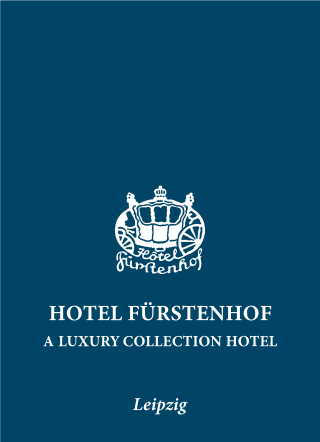
The Hotel Fürstenhof is the oldest luxury hotel in Leipzig. The original building Löhrs Haus at today's Tröndlinring 8 dates back to 1771, and since 1890 it has been operated as a hotel – combined with several conversions and extensions. Since 2018, the hotel has been owned by Vicus Group AG, and it was also a member of the Leipzig Hotel Alliance. The hotel has been closed since March 2021.
16. Russische Gedächtniskirche
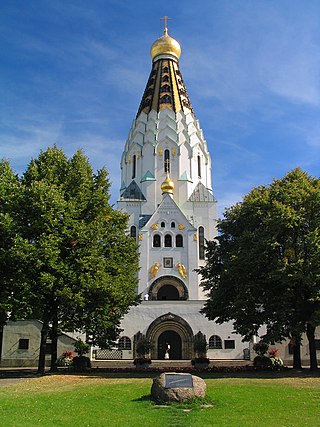
The St. Alexi Memorial Church of Russian Honour is the Russian Orthodox church in Leipzig, on the corner of Philipp-Rosenthal-Straße 51a and Semmelweisstraße near the German Library. It was built in 1912/13.
17. Lindenthaler Mühle
Mills have been documented in Leipzig since the Middle Ages. They were watermills, and they were all to the west and near the city. The process water was brought in by mill ditches from the flood-prone floodplain area of Pleiße and Weißer Elster. Since water power was the most important source of energy until the 19th century, the mills served not only as grain mills, but also to drive various other trades. The regulation of the weirs and ditches as well as their maintenance offered a certain flood protection.
18. Floßplatz
The Floßplatz [ˈflɔsˌplat͡s] – pronounced "short O" [ɔ] in Leipzig – is the remnant of a larger historical complex that served for centuries to supply the city of Leipzig with firewood, but also with construction timber. It owes its name to its function as a municipal stacking and sales point for the timber rafted over the Elster and Pleiße. In its history, it was therefore sometimes called Holzplatz or Churfürstlicher Holzplatz.
19. Altes Bach-Denkmal
Leipzig's old Bach monument stands in the green spaces on Dittrichring, near St. Thomas's Church. It is the world's oldest monument to Johann Sebastian Bach. Donated by Felix Mendelssohn Bartholdy, it was inaugurated in 1843. The designs were made by Eduard Bendemann, Ernst Rietschel and Julius Hübner. The monument was executed by the Leipzig sculptor Hermann Knaur. After its construction, it was restored several times, most recently in 2005.
20. Versöhnungskirche
The Church of Reconciliation is an Evangelical Lutheran church in Leipzig-Gohlis, on the corner of Franz-Mehring-Straße 44 / Viertelsweg, near the Krochsiedlung. It was built from 1930 to 1932 according to a design by the Leipzig architect Hans Heinrich Grotjahn in the New Objectivity style and is a listed building.
21. UT Connewitz
The UT Connewitz is the oldest surviving cinema in Leipzig and one of the oldest in Germany. It is located at Wolfgang-Heinze-Straße 12 in Connewitz. The first film screening took place on Christmas Day 1912: The crime film The Black Cat, Part 2, a short silent film directed by Viggo Larsen, was shown.
22. Petershof
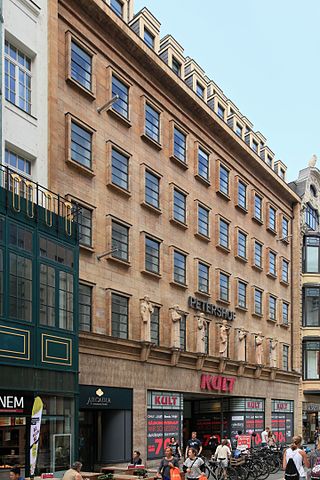
The Petershof is a building complex in the city centre of Leipzig, which is used as a residential and commercial building. It was built from 1927 to 1929 according to plans by the Leipzig architect Alfred Liebig (1878–1952) as a trade fair building and also housed the Capitol cinema until 2003.
23. Kirche Hohen Thekla
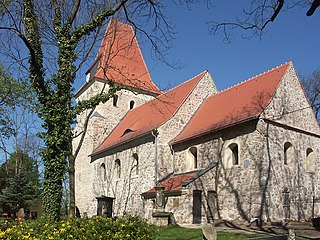
The church of Hohen Thekla is a 12th-century, originally Romanesque sacred building on the Kirchberg in Thekla, a district of the city of Leipzig in the Free State of Saxony. The church of Hohen Thekla – together with the mountain church of Beucha and the church of Panitzsch – is commonly referred to as one of the "Three High Priests" in the Leipzig area.
24. Museum in der Runden Ecke
The Memorial Museum in the "Round Corner" is a museum about the history, structure and working methods of the Ministry of State Security (MfS) in the GDR, located in the former headquarters of the District Administration for State Security on Dittrichring in Leipzig.
Wikipedia: Gedenkstätte Museum in der „Runden Ecke“ (DE), Website
25. Travel24 Hotel - Ringmessehaus
The Leipzig Ring-Messehaus on the Tröndlinring was the largest inner-city trade fair building in the world. It was used as a fashion, tobacco and textile fair house until 1992. Since 2017, Travel24's first budget hotel has been located in the middle part of the building.
26. Stadtarchiv Leipzig
The Leipzig City Archive documents the history of Leipzig with documents since the Middle Ages in the form of documents, files, business books, newspapers and printed materials, maps and plans, as well as photos and postcards. With its holdings, it is one of the most important municipal archives in Germany. His tasks also include keeping the city chronicle.
27. Lindenfels Westflügel
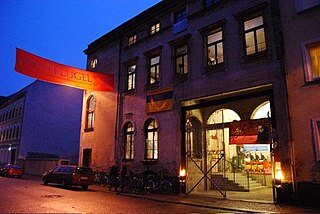
The west wing Leipzig is an international production center for figure theater in Leipziger Hähnelstraße 27. The Lindenfels Westflügel e. V. is the owner of the building and sponsoring association of the theater. In addition to maintaining and renovating the property, the aim of the initiative is to implement an internationally oriented event location in the west wing. Since 2003, theater performances, concerts, exhibitions and performances have been held in the building once built as a ball house. The focus is on international figure theater. The house acts as a venue and production center, offers workshops and also works on the encounter of theory and practice. Since 2012 there has been the culture Froelich & Herrlich on the ground floor, which is open every Friday and at events. It is based on the oven tube manufacturer, who in the meantime used the building to store oven pipes. The revenue of the bar will benefit the west wing's work, they are operated by volunteers. Friendly artists offer cultural programs.
28. Villa Davignon
The residential building at Friedrich-Ebert-Straße 77 is a listed building in Leipzig's Bachviertel, driving from Westplatz in the direction of Waldplatz behind the rediscovered Elstermühlgraben or on the riverside promenade called Carl-Maria-von-Weber-Straße on the left side of the street. The building was built by Arwed Roßbach and was also called Villa d'Avignon at the time of its construction or in the 19th century under false reference, because the builder was the merchant Louis Davignon.
Wikipedia: Wohnhaus Friedrich-Ebert-Straße 77 (Leipzig) (DE)
29. Geschwister Scholl-Haus, Institut für Kunstpädagogik
The building at Ritterstraße 8–10 in Leipzig, today the Geschwister-Scholl-Haus, was built between 1908 and 1910 as the seat of the first German commercial college on one of the oldest properties of the University of Leipzig, the Großer Fürstencolleg. The building was designed by Fritz Schumacher (1869–1947), the co-founder of the Deutscher Werkbund.
30. Bronzerelief „Aufbruch“
The bronze relief "Departure" is a work of art created in 1973 for the then new building of the University of Leipzig in the style of Socialist Realism. Since the head of Karl Marx, the university's patron saint at the time, is located in its centre, it is also commonly referred to as the "(Karl) Marx relief". In 2007 and 2008, there was a broad social debate in Leipzig about the re-erection of the relief on the occasion of the construction work on the campus at Augustusplatz.
31. Museum of Musical Instruments of Leipzig University
The Museum of Musical Instruments of the University of Leipzig is a museum in Leipzig, Germany. It is located on Johannisplatz, near the city centre. The museum belongs to the University of Leipzig and is also part of the Grassi Museum, whose other members are the Museum of Ethnography and the Museum of Applied Arts.
Wikipedia: Museum of Musical Instruments of Leipzig University (EN), Website
32. Genezarethkirche
The Church of Paunsdorf – since 1946 Genezarethkirche Paunsdorf – is the Evangelical Lutheran church in Leipzig-Paunsdorf. Together with the parishes of Baalsdorf-Mölkau and Sellerhausen-Volkmarsdorf, the Paunsdorf church belongs to the "parish in the east of Leipzig".
Wikipedia: Genezarethkirche (Leipzig-Paunsdorf) (DE), Website
33. Messehof
The Messehof is a present-day commercial building with a shopping arcade, the Messehofpassage, in the city centre of Leipzig. It was built between 1949 and 1950 and is the first new municipal trade fair building after the Second World War.
34. Könneritzbrücke
The Könneritz Bridge spans the White Elster in Leipzig and connects the districts of Plagwitz and Schleußig. Könneritzstraße begins at its southeastern end, followed by Ernst-Mey-Straße at the northwestern end. The bridge is named after the former Leipzig district governor and Saxon finance minister Leonce von Könneritz.
35. Erlöserkirche
The Church of the Redeemer is the Protestant sacred building in Leipzig's district of Reudnitz-Thonberg or Thonberg. The church was built between 2004 and 2006, and the foundation stone was laid on 12 May 2005.
36. Peterskirche
Old St. Peter's Church is a Lutheran parish and church in the old town of Leipzig, Germany. The present church building, in Gothic Revival style, was erected from 1882 onwards at the Gaudigplatz, and also serves as a concert venue. It replaced a former building at a different location.
37. Matthäikirchdenkmal
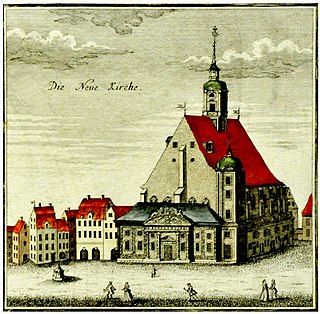
St. Matthew was a church in the old town of Leipzig. During its history it had several names and functions. As a church of the Franciscan order, built in 1488, it was known as Barfüßerkirche and Heiliggeistkirche. It served as a Lutheran church, known as Neukirche, from 1699. A new congregation formed in 1876 and named the church Matthäikirche. The building was destroyed in a bombing in 1943.
38. Botanischer Garten Leipzig
The Leipzig Botanical Garden is a 3.5-hectare botanical garden maintained by the University of Leipzig and is located at Linnéstraße 1, Leipzig, Saxony, Germany. It is the oldest botanical garden in Germany and among the oldest in the world, and open daily without charge.
39. Old Stock Exchange
The Alte Handelsbörse or Alte Börse in Leipzig, Saxony, Germany, is the city's oldest assembly building of merchants, and also the oldest Baroque building. Built as the Börse in 1678, it is now used as an event venue and is known in English as the Old Stock Exchange.
40. Reclam-Museum
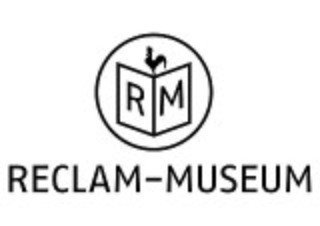
The Reclam Museum is a book museum in Leipzig's Graphic Quarter, Kreuzstraße 12. It includes an exhibition of around 10,000 booklets, books, etc. from Reclam's Universal Library from its beginnings in 1867 to the present day. It is the only museum and the most comprehensive collection of its kind on publications of the Reclam publishing house.
41. Museum für Druckkunst
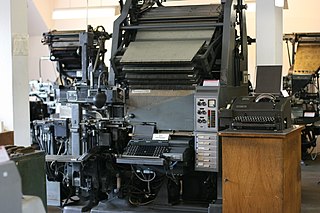
The Museum of Printing Arts Leipzig in the traditional book and publishing city is a museum that documents older printing techniques. It is located in Nonnenstraße in the Leipzig district of Plagwitz.
42. Schwanenteich
The Schwanenteich in Leipzig is a body of water with a surrounding park on the outskirts of Leipzig's city centre. The park is part of the oldest urban landscape park in Germany. The official name of the park, which comes from history, is Oberer Park.
43. Christuskirche
The Christuskirche zu Eutritzsch in Leipzig is the Protestant church building in Leipzig-Eutritzsch. The church is more than 700 years old and was extensively redesigned around the year 1500. It is located at Gräfestraße 16 and enjoys monument protection.
44. Apelstein 3
The Apel-stones, named after the writer Theodor Apel from Leipzig who commissioned them, mark important events during the Battle of Leipzig. There are 50 in total. They were sculpted by A. F. Aster, and put up between 1861 and 1865.
45. Merkurhaus
The Merkurhaus in Leipzig is an office and commercial building at the southern entrance to Petersstraße with the address Markgrafenstraße 2. The name of the house refers to a predecessor building on which a Mercury statue stood.
46. Erholungspark Lößnig-Dölitz
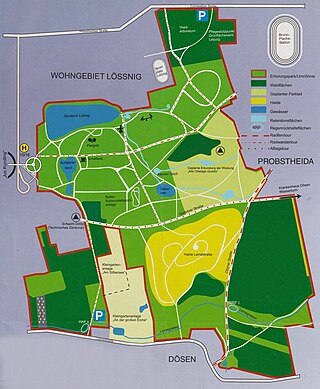
The Lößnig-Dölitz recreation park is one of the youngest and largest parks in Leipzig. It was built on a site under which formerly underground lignite mining was carried out. The park is an extensive meadow area consisting of individual trees and groups of trees and interspersed with water surfaces with different adventure areas.
47. Andreaskapelle
The Andreaskapelle is a church building in the Leipzig district of Knautnaundorf, dating back to the 11th century. It is the oldest surviving ecclesiastical space on Saxon soil and the oldest surviving building in Leipzig since the incorporation of Knautnaundorf.
48. Richard-Wagner-Denkmal
The Richard Wagner Memorial in Leipzig was unveiled in 2013 to mark the 200th birthday of Richard Wagner (1813-1883). It was created by Stephan Balkenhol using the base designed 100 years ago by Max Klinger (1857-1920).
49. Ehem. Mitteldeutsche Motorenwerke
Mitteldeutsche Motorenwerke GmbH was a company based in Leipzig that existed from 1935 to 1948 and belonged to the Auto Union Group. MiMo produced Junkers aircraft engines under license and was Auto Union's third-largest plant after Horch in Zwickau and the Siegmar plant near Chemnitz.
50. Pfarrkirche Liebfrauen
The Church of Our Lady in Leipzig-Lindenau is the parish church of the Roman Catholic parish of St. Philipp Neri in the deanery of Leipzig. It is located on the southern border of Lindenau at Karl-Heine-Straße 112 near the Leipzig-Plagwitz train station. The building, built in neo-Romanesque style, is a listed building.
51. Österreicherdenkmal Lößnig
Die Österreicher-Denkmale in Leipzig sind vier bis auf die Inschriften identische Denkmale aus dem Jahr 1913, die an die erfolgreiche Teilnahme österreichischer Truppen an der Völkerschlacht bei Leipzig erinnern. Ein ehemaliges Weiteres stand in Markkleeberg.
52. St. Laurentius
St. Laurentius is the Roman Catholic church in the Reudnitz district of Leipzig. It stands at Stötteritzer Straße 47 and is the parish church of the Catholic parish of Saint Mary Magdalene Leipzig-East in the deanery of Leipzig.
53. Kirche Liebertwolkwitz
Liebertwolkwitz Church is a church building of the Evangelical Lutheran Church of Saxony in Liebertwolkwitz, a district in the southeast of Leipzig. It was built in 1572/1575 on the site of a medieval church building, making it the oldest building in Liebertwolkwitz.
54. Alter Johannisfriedhof
The Alter Johannisfriedhof is the oldest burial ground in the city of Leipzig, Germany. It began in 1278, as part of the Johannishospital in Leipzig, a leper hospital. It was later attached to the Johanniskirche, which was destroyed in World War II. In 1536 it became the common burial ground for the city of Leipzig, and expanded several times. It was also re-modeled in the style of the Camposanto in Pisa, a popular style of cemetery in Germany. In 1680 and 1805 the graveyard was expanded by the additions of sections three and four respectively, then the fifth and the final extension took place between 1827 and 1863. 1883 saw its last burial.
55. Schillerhaus
The Schillerhaus is a small former farmhouse in the Leipzig district of Gohlis. Friedrich Schiller lived on the upper floor of the house in the summer of 1785. He worked here on the 2nd act of Don Carlos, edited the Fiesco and wrote the first version of the poem "An die Freude", which he later completed in Dresden.
56. Naturkundemuseum
The Natural History Museum in Leipzig is a natural history museum in the city of Leipzig, Germany, located at the northwest corner of the Inner City Ring Road. The museum contains the insect collection of Alexander Julius Reichert.
57. König-Albert-Haus
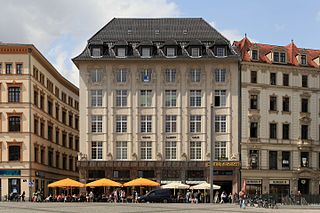
The König-Albert-Haus is a commercial building at Markt 9 in Leipzig, Germany. It forms the corner house to the Barfußgäßchen, where it bears the house numbers 2/4/6/8. His name is reminiscent of the Saxon King Albert. The house is a listed building.
58. Goethedenkmal
The Goethe Monument in Leipzig is a bronze statue standing on a high pedestal on the Naschmarkt in front of the Old Trade Exchange, which depicts Johann Wolfgang von Goethe (1749–1832) as a young man in reference to his almost three years of study in Leipzig. It was created by Carl Seffner (1861–1932).
59. Dr.-Güntz-Park
The Güntz Park is a park of about three hectares in the southeast of Leipzig between Güntzstrasse and Schönbachstrasse. According to the municipal city structure of 1992, the park belongs to the Stötteritz district, but is located on a former Thonberg hallway. Therefore, another name Thonberg-Park is.
60. Universität Leipzig, Rektorat, Königliches Palais
The Royal Palace is a building of the University of Leipzig, which was built in 1861 as a residence for visits of the Saxon king to Leipzig according to designs by the architect Albert Geutebrück (1801–1868) and today serves as the rectorate of the university.
61. Park an der Etzoldschen Sandgrube
The park at the Etzoldsche Sandgrube is a park in the southeast of Leipzig with a memorial to the University Church of St. Pauli, which was blown up in 1968. On city maps, the names Freizeitpark Südost and Freundschaftspark can also be found.
62. Kirche Gottscheina
Gottscheina Church is a church building of the Evangelical Lutheran Church of Saxony in the Gottscheina district of Leipzig, Germany. It stands in the middle of the village, slightly elevated against the old Rundanger and as the southern end of the later cul-de-sac extension of the village. It is surrounded by the cemetery, which has a rammed wall, and enjoys monument protection together with it.
63. Schinkel-Tor
The Schinkeltor at the west entrance to the New Augusteum of the University of Leipzig is the only surviving building fragment of the university complex on Augustusplatz from the 19th century. It is named after the Prussian master builder Karl Friedrich Schinkel (1781–1841). It is a listed building.
64. Deutsches Buch- und Schriftmuseum
The German Museum of Books and Writing in Leipzig, Germany, founded in 1884 as Deutsches Buchgewerbe-Museum, is the world's oldest museum of its kind, dedicated to collecting and preserving objects and documents as well as literature connected with the history of books, including paper, printing techniques, the art of illustration, and bookbinding. The museum is housed in a modern €60 million annex to the German National Library in Leipzig built in 2011.
65. ACQUA Klinik
The Villa Baedeker is a listed city villa from the 1870s at Käthe-Kollwitz-Straße 64 in Leipzig's Bachviertel, which was owned by the Baedeker publishing family for around seventy years. Today it is the seat of a private clinic for special surgery.
66. Ev.-Luth. Kirche zu Wiederitzsch
Wiederitzsch Church is a church building of the Evangelical Lutheran Church of Saxony in the Leipzig district of Wiederitzsch. Its Romanesque parts date back to the 12th century. It stands on the former cemetery and enjoys monument protection.
67. Kirche Hohenheida
The Hohenheida Church is a church building of the Evangelical Lutheran Church of Saxony in the Hohenheida district of Leipzig, Germany. It stands slightly elevated on the green of the former village, is surrounded by the cemetery and forms the centre of the old village centre. It enjoys monument protection.
68. Zeitgeschichtliches Forum
The Zeitgeschichtliches Forum Leipzig is a museum of contemporary German history. The museum was opened in 1999 and focuses on the history of the German division, everyday life in the communist dictatorship of the GDR, and the reunification process. It is located in the Grimmaische Strasse in the city center of Leipzig, Germany. A landmark of the museum is the sculpture The Step of the Century by Wolfgang Mattheuer in front of it.
Wikipedia: Zeitgeschichtliches Forum Leipzig (EN), Website, Opening Hours, Website
69. St. Gertrud
The Church of St. Gertrud is the Roman Catholic church in Leipzig's Engelsdorf district. It stands at Engelsdorfer Straße 298, belongs to the Catholic parish of Saint Mary Magdalene Leipzig-East in the deanery of Leipzig and has the patronage of Gertrud von Helfta.
70. Lincks Gartenhaus
Linck's Garden House is a reconstructed garden house built in the Baroque period in Leipzig's Seeburg district. It was built by the Leipzig pharmacist Johann Heinrich Linck the Younger. It is currently used by a law firm.
71. St. Martin
The Plaußig Church is a church building of the Evangelical Lutheran Church of Saxony in the Leipzig district of Plaußig. It stands in the centre of the former street village next to the former manor. To the south, the wooded terrain slopes slightly down to the Parthe. The church is a listed building, including the surrounding cemetery and the war memorial on it.
72. Fürstenkollegium
The Kleines Kolleg was one of the two plots of land with buildings that the sovereigns, the Meissen Margraves Friedrich and Wilhelm, donated to the newly founded University of Leipzig in 1409. The buildings were used for teaching and also served as accommodation for the masters – there were eight in the Kleines Kolleg – and the students. The emoluments of the masters were also part of the foundation.
73. Sächsisches Psychiatriemuseum
The Saxon Psychiatric Museum is a small museum in Leipzig and deals with the history of lunatic asylums and psychiatry. It is organized by the Durchblick association, an initiative for people affected by psychiatry in Leipzig. It was founded in 2000. The special exhibitions deal with individual fates, careers and institutions:the life stories of the court president Daniel Paul Schreber (1842–1911) and the Saxon dialect poet Lene Voigt (1891–1962) the biographies and therapeutic concepts of doctors and psychiatrists such as Christian August Fürchtegott Hayner (1775–1837) and Hermann Paul Nitsche (1876–1948) the development of psychiatric institutions in Saxony in the Middle Ages up to the sanatorium and nursing homes.
74. Leibnizdenkmal
The Leibniz Monument in the inner courtyard of the new campus of Leipzig University (Leibnizforum) honours the mathematician, philosopher, physicist, politician and diplomat Gottfried Wilhelm Leibniz (1646–1716), who was born in Leipzig on 6 July 1646 and studied at the local university. He is considered the polymath of his time, one of the most important philosophers of the 17th and 18th centuries and an important pioneer of the Enlightenment.
75. Heinrich-Heine-Denkmal
The Heinrich Heine Monument in Leipzig is one of the first monuments to be erected in the city after the Second World War. It was inaugurated on the 150th anniversary of the poet's birth. The material comes from the base of the Victory Monument on the market, which was dismantled in 1946.
76. Gedächtniskirche
Gedächtniskirche Schönefeld is a Lutheran church in Schönefeld, now part of Leipzig, Saxony, Germany. The former village church was built in style from 1816, replacing a previous building destroyed by fire. It was named Gedächtniskirche in 1916 when it became a memorial to fallen soldiers.
77. Musikalische Komödie
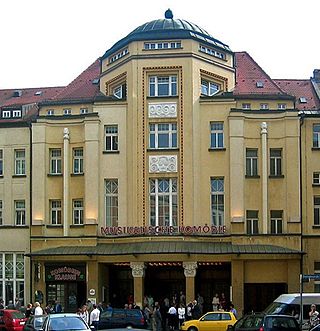
The Musikalische Komödie is an operettas and musicals theatre in Leipzig. Its venue is located in the Lindenau district in the Haus Dreilinden, which is often referred to as the "Musical Comedy" itself. It is one of the three sections of the Oper Leipzig. However, it has its own ensemble with soloists, choir, ballet company and orchestra. Because of this and its own venue, it is perceived by the public as an independent cultural institution. Its repertoire ranges from Spieloper to operetta and musicals.
78. Eventpalast
The Betonhalle is a building on the Old Exhibition Centre in Leipzig. It was created for the International Construction Exhibition in 1913 (IBA) and already bore this name at that time. In its seventy-year history as an exhibition hall of the Technical Fair, it was given the number 12 in the 1930s and 16 in the last numbering. Used as an event venue from 2006, it was called the Volkspalast until 2010 and the Pantheon Leipzig until 2012. Since then, it has been the event palace. It is the oldest building on the site and is a listed building.
Share
How likely are you to recommend us?
Disclaimer Please be aware of your surroundings and do not enter private property. We are not liable for any damages that occur during the tours.
